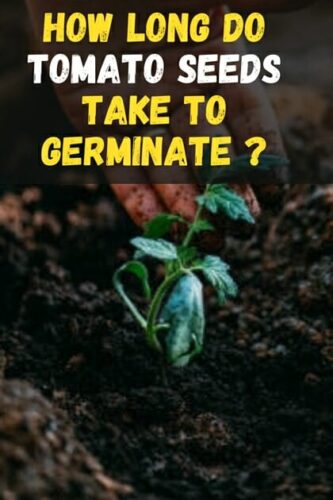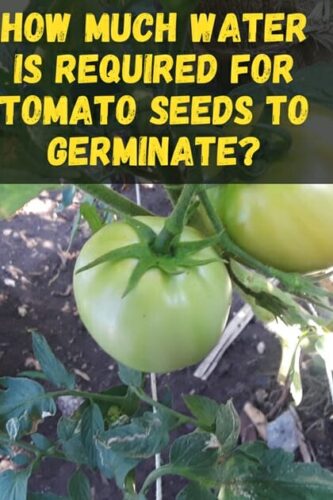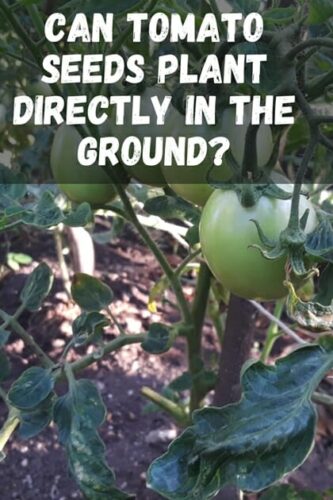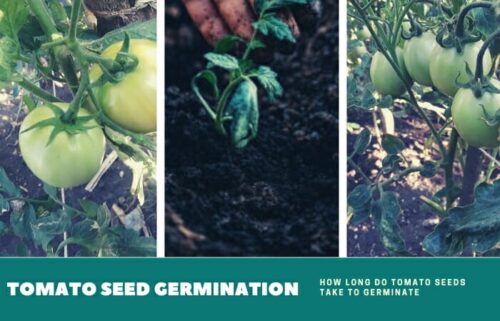How long does a tomato seed take to germinate?
The time it takes for tomato seeds to germinate usually takes 7–10 days, depending on the temperature, moisture, variety, and nature of the tomato seeds.
Tomato seeds should be planted with very little seed-raising mix covering them. If you sow them too deeply, they may rot, or at least take longer to grow through the soil.
One of the best months to sow tomato seeds is in August. Although most gardeners would prefer to sow tomato seeds at the beginning of spring,.
However, it all depends on where you live, but the best thing about tomatoes is that they are an all-year-round vegetable so there is no specific time to grow them.
Nevertheless, as soon as the tomato seeds have germinated, the seedlings are relocated to a semi-shady location outside for a few days.
This is ideal to let the seedlings adjust to light and then to full sun. Tomatoes need at least 6 weeks from their germination stage until it’s time to transplant.
In general, the issue with most plant seeds, and not just tomato seeds, is that the older they get, the longer they take to germinate when measured against germination rates for seeds saved in the prior year.
What this really means is that the older they are, the longer the germination time can be. This applies to other plant seeds as well.
So, don’t give up on older seeds you have stored up; they may still be viable; however, they may not have enough starting energy to germinate within a regular time frame.

How Long Tomato Seed Take To Germinate?
How long does a tomato seed take to germinate?
Tomato seeds take 7–10 days to germinate. Moisture and temperature are variables that impact germination rates and time frames.
Tomatoes are originally from the Mediterranean region, and they can be perennial plants. They usually love warm soil to germinate in.
Methods to germinate your tomato seeds faster
If you are growing your tomato seeds without soaking them overnight, it will take about one week before you start to see signs of germination.
However, if you soak the tomato seeds for about 24 hours, it will take less than a week to see signs of sprouting and germination, even within 3–5 days.

How much water is required for tomato seeds to germinate?
The amount of water tomato plants need depends on where the tomato seeds are germinated and the medium they are germinated in.
This means if your tomato seeds are sown in plug trays using a compost seeding soil mix, each of the tray cells is approximately 1.5 inches by 2.5 inches or less in size.
They don’t hold much soil since their main function is to germinate the seeds. Once the seedlings sprout, they are usually transplanted to larger pots or in the garden.
However, since there is not much soil mixture in each cell, a lot of water is not needed for germination.
There is only enough to make the soil uniformly damp. Even less water is needed sometimes if the plug trays are covered to prevent the water from evaporating.
If your tomato seeds are started in larger pots, for example, 4-inch pots, each pot contains more soil, so it requires more water to make the soil moist.
On the other hand, if tomato seeds are directly sown into the garden soil, it can require a great deal of water to make sure that the soil remains damp until the seeds germinate.
Additionally, garden soil usually takes more water to achieve uniform dampness and moisture than sterile seed soil does.
The starter soil mix contains such things as vermiculite and other properties to help achieve the goal of germination.
Vermiculite’s properties keep the soil porous and prevent it from compacting; it also doesn’t absorb or retain much water.
The Amount Of Water Required For Tomato Seedlings
Sowing tomato seeds in covered plug trays with the sterile mix will probably take less than a half-cup of water per cell.
If the tomato seeds are sown directly into the garden soil, it could take over a quart of water to germinate each seed, and this can vary depending on the condition of your garden soil.
What is the actual amount of water required for tomato germination?
The actual amount of water required for tomato seeds to germinate is tiny; however, for germination to occur, the soil medium usually needs to be kept uniformly damp.
When it comes down to watering, in most cases, it is actually the soil that takes most of the water, rather than the seed.
Can you plant seeds from a fresh tomato?
If you can extract the seeds from an old-fashioned, non-hybrid-ripened tomato, you certainly can.
Most people usually save seeds from their last-grown tomato, start the tomatoes indoors and then transplant them in the garden when the weather gets warm enough.
However, the tomatoes you buy in stores are hybrid tomatoes, which means a lot of the seeds are sterile, in other words, dead, and the ones that don’t grow well but probably do not resemble the hybrid tomato they came from.
So, it might be fun to see what happens with hybrid seeds when you plant them, however, if you want real tomatoes, either find non-hybrid seeds to start or buy viable seeds.
The way to grow non-hybrid tomatoes is to buy already-started ones from a nursery nearby and plant them it is warm out.

Can Tomato Seeds Plant Directly in The Ground?
Tomato seeds can be planted directly in the ground when the seedbed is finely prepared and the weather is at a favorable temperature, humidity, and rainfall.
If you are going to grow hundreds of tomato plants then it would be ideal to use a starting cell. However, if it is just for years’ purposes you can mostly sow them directly on the ground.
Seeds planted in nursery beds have more advantages, tomato seeds are too small to be planted directly in the seedbed.
A nursery bed can be prepared earlier than you prepare a seedbed, nursery bed is easier to manage especially when it comes to watering, pests and disease control, direct sunlight, strong winds, and control of splash erosion.
Also, if the seedlings wither, they can be replaced from the nursery bed, this is a practice called pricking out/ gapping.
Are Tomato Plants Started From Seed Hardier Than Purchasing Nursery Plants?
Tomato plants from the nursery are not hardier, in the case that hardiness is a priority of plants.
Most tomatoes, in general, are tender perennials, but in temperate zones grow them as annuals. They will be killed by freezing temperatures.
Other varieties of tomatoes are a bit more tolerant of cool temperatures, and they are able to set fruit and ripen fruit in a relatively short time.
However, the difference between those grown at a nursery and those you grow yourself is often that the nursery plants are very much larger, and they can be transplanted right away.
The Benefit of starting your own tomatoes from seed is that you can grow just exactly the ones you want, and are not limited to whatever your local nursery stocks are avaiable.
Nevertheless, when growing your own tomato plant, you are in total control of your plant and can choose to grow them without artificial fertilizers or pesticides.
The downside of growing your own tomato plant is that you must start the seeds in mid-winter or very early spring.
This means you must have a place indoors with warmth, space, and light enough to produce healthy plant germination.
Also, keep in mind that even though the weather is nice outside, it will take a while for plants that have been babied for many weeks inside your house to adapt to their new environment.
Direct sunlight can wither their leaves when they are just transplanted. You should plant tomatoes in full sun.
However, before you plant them, get them accustomed to the outdoor climate by setting them in a shaded place for several days.
Can Tomatoes Seeds From This Harvest and Save For Next Year?
Tomato seeds from a previous good year can be extracted if they are NOT from a Hybrid tomato plant.
the definition of A Hybrid tomato is the result of cross-breeding two different varieties of tomato plants.
However, what will happen is that the seeds of this Hybrid tomato plant will not produce the exact original mother plant of fruiting.
Nevertheless, It will have the same characteristics as the Hybrid, but not all of its features.
If you are interested in growing your own plants from your saved tomato seeds, make sure they are (NOT) a Hybrid variety. This goes for other plant seeds as well.
personally speaking, sometimes I toss a tomato seed or two on the soil at the end of the season they usually germinate when it is time for them to grow.
I would then separate them and put them in little grow pots till they are big enough and ready to plant.
Will a Tomato Plant Continue To Grow And Produce Fruit If It is Not Pulled Out By Frost?
Tomato plants are considered perennials so over a period of time, once they produce a certain amount of fruit, the plant will die.
If production is your main goal, replant every year. However, if your goal is general curiosity, the plants should live quite long.




